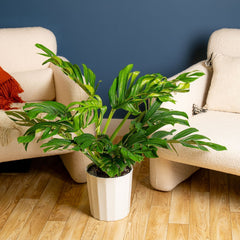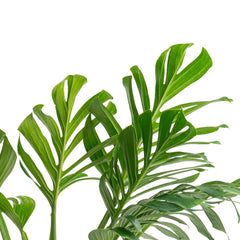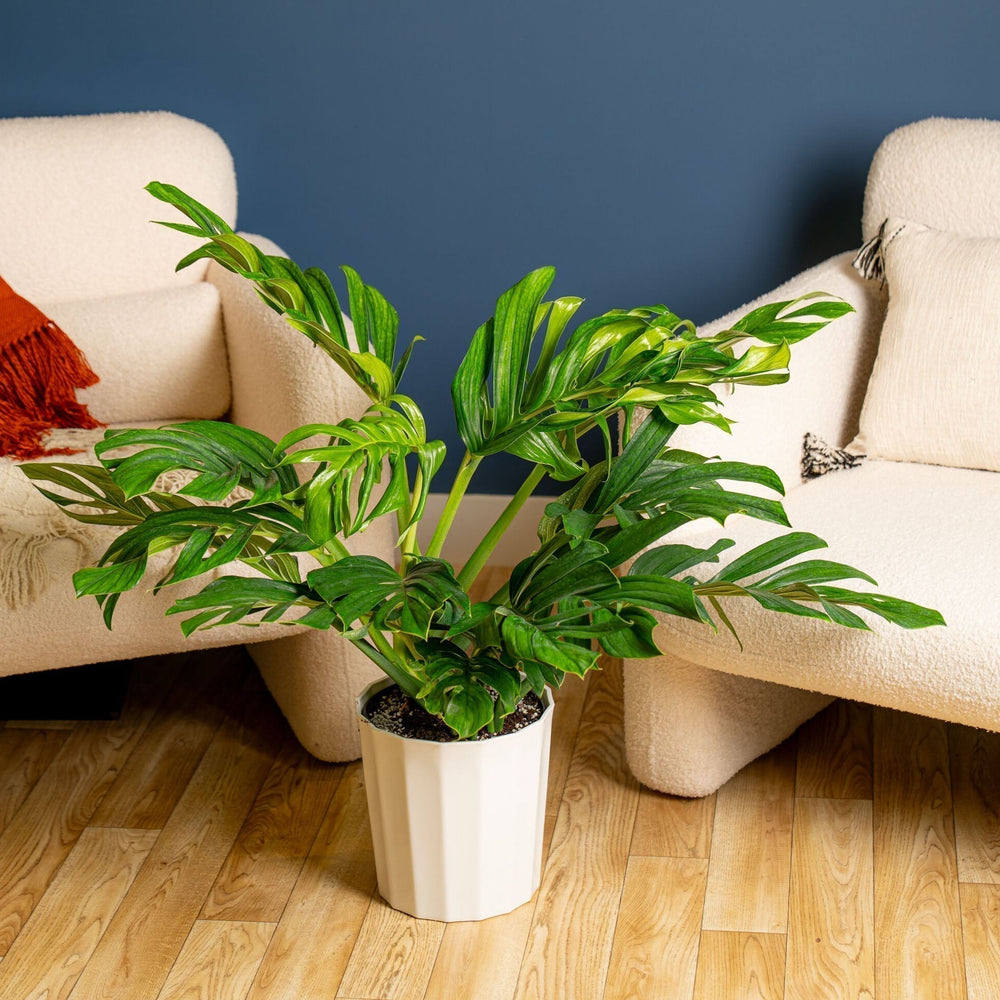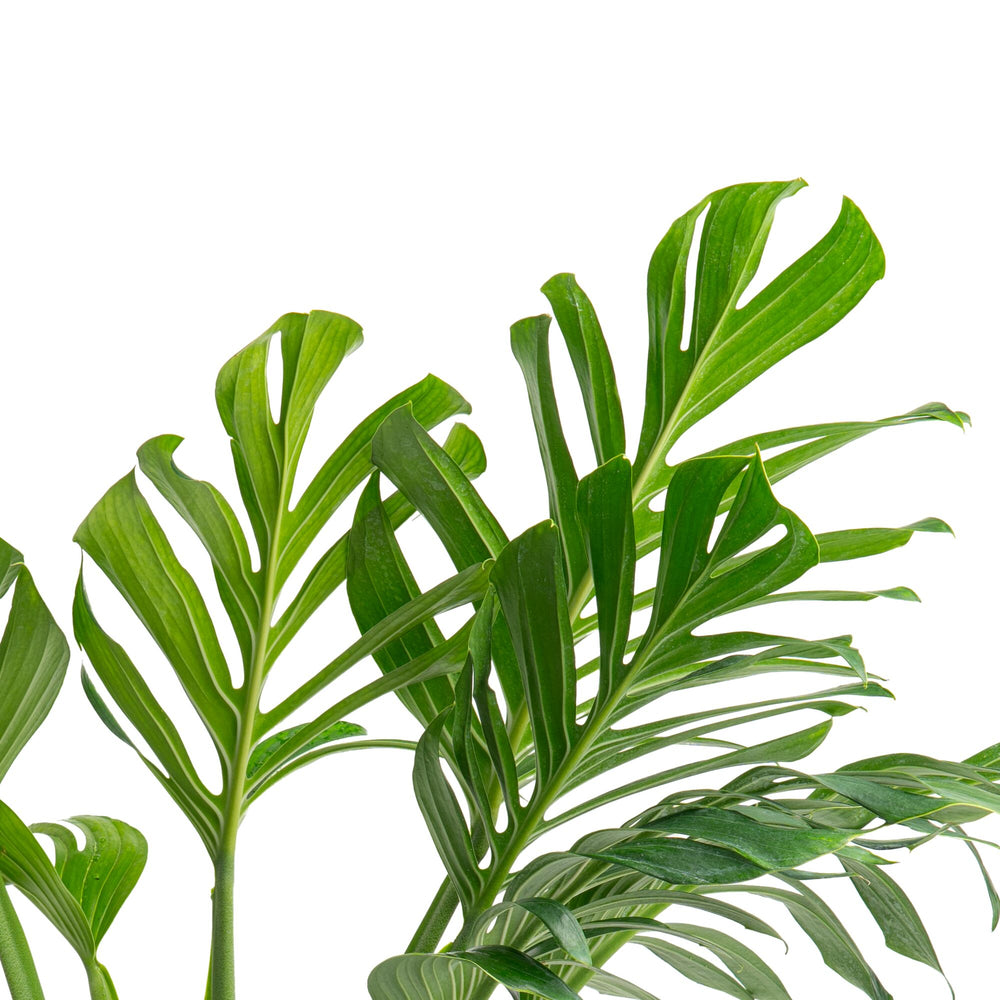Monstera pinnatipartita (Monstera pinnatipartita )
Monstera pinnatipartita Plant Features
Big, bold, and easy to grow, Monstera pinnatipartita is a fabulous houseplant if you're looking to make a statement. It shows off big leaves (to 3 feet long) with eye-catching slits in the sides. They're dark green and wonderfully textural.
One interesting trait about this Monstera is that it looks very different as a young plant compared to a mature specimen. When young, it's a small, vining plant that looks similar to Monstera Peru with almost corrugated dark green oval-shaped leaves. As it grows up, the leaves start to get larger, develop slits in the sides, and the internodes (spaces between the leaves) become might closer together, making it look like a self-supported plant.
Younger plants will need a support -- such as a wall, cedar plank, or moss pole -- on which to climb. More mature plants are better suited as floor plants because of their large size.
Just like its cousin, Monstera deliciosa, M. pinnatipartita features thick leaves that help give it some drought tolerance. This makes it a top pick for both experienced houseplant lovers and beginners.
Monstera pinnatipartita Growing Instructions
M. pinnatipartita Light Needs
Grow Monstera pinnatipartita in a spot where it gets bright light or medium light. That means your plant should create a medium to strong shadow throughout much of the day, such as within a couple of feet of an east- or west-facing window. Happily, Monstera pinnatipartita can grow quite well without natural sunlight. Artificial LED or plant lights are just fine.
M. pinnatipartita Water Needs
Like most other houseplants, Monstera pinnatipartita is somewhat sensitive to being overwatered. Allow the top 25 to 50 percent of the potting mix to dry before watering your plant again. It has relatively thick leaves, which allow it to tolerate drying out for short periods. Overwatering can cause the leaves to go yellow and drop prematurely.
M. pinnatipartita Humidity Preferences
Provide your Monstera pinnatipartita with average to above-average relative humidity levels indoors for the happiest plant. Humidity levels over 45 percent are optimal.
If your home or office has particularly dry air, your plant will probably appreciate a humidity boost. One easy way to do this is to group your Monstera in a cluster with other houseplants. Or place a small humidifier nearby. Alternatively, grow it over a wide pebble tray.
Fertilizing M. pinnatipartita
Monstera pinnatipartita isn’t a particularly hungry plant, so you can fertilize it in spring and summer if you wish. For faster growth, you can fertilize more frequently. Select a fertilizer formulated for use on houseplants or container plants. Follow the directions on the product packaging, and never use more fertilizer (in terms of quantity or frequency) than the instructions on the product’s packaging recommend.
Pruning M. pinnatipartita
Pruning typically isn't necessary for this slow-growing houseplant.
-
Water
Medium water needs
-
Light
Indoors: High light
Indoors: Medium light
-
Colors
Green
-
Special Features
Purifies the air
Super-easy to grow
Complement your Monstera pinnatipartita
Monstera deliciosaMonstera deliciosa likes the same growing conditions but has wider leaves, so pairing the two could create a stunning visual contrast.
Moonlight Scindapsus
Contrast M. pinnatipartita's large size and rich color with the smaller silvery foliage of this stunning Scindapsus variety.
Q&A
Is your M. pinnatipartita grown from tissue culture?No, we don't grow our Monstera pinnatipartita from tissue culture. Rather, we grow it from cuttings harvested from our crop of Mother Plants.



